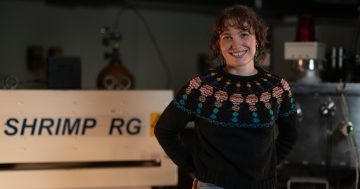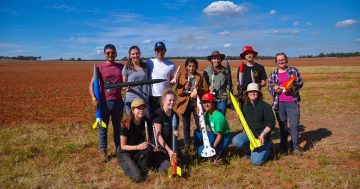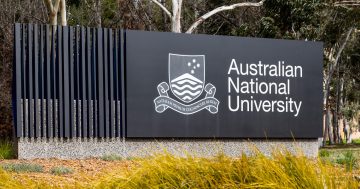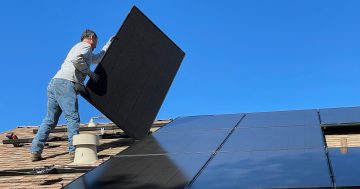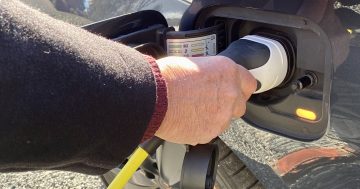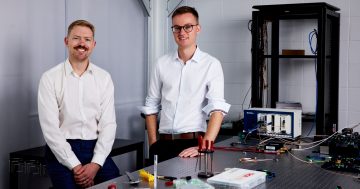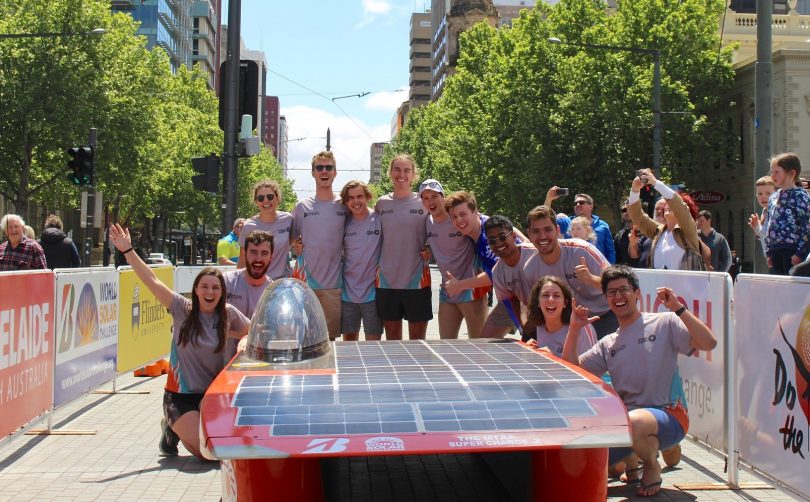
The ANU’s solar racing team celebrates at the finish line of the last Bridgestone World Solar Challenge. Photo: Supplied.
If you ever use an electric vehicle (EV) charger, chances are it will carry the ‘Tritium’ name.
The Brisbane-based clean-energy company has quietly taken over a large chunk of the global EV-charger market, even announcing the construction of a factory in Tennessee in the US earlier this year. It all started when engineering students at the University of Queensland took part in a solar-powered car race in 1999.
In Canberra, the Australian National University (ANU) is relatively new to the world-famous biennial Bridgestone World Solar Challenge. Its first solar car came along in 2017.
The team of 52 students – from a diverse range of degrees – is currently gearing up for its third race next year after the 2021 event was cancelled because of COVID-19.
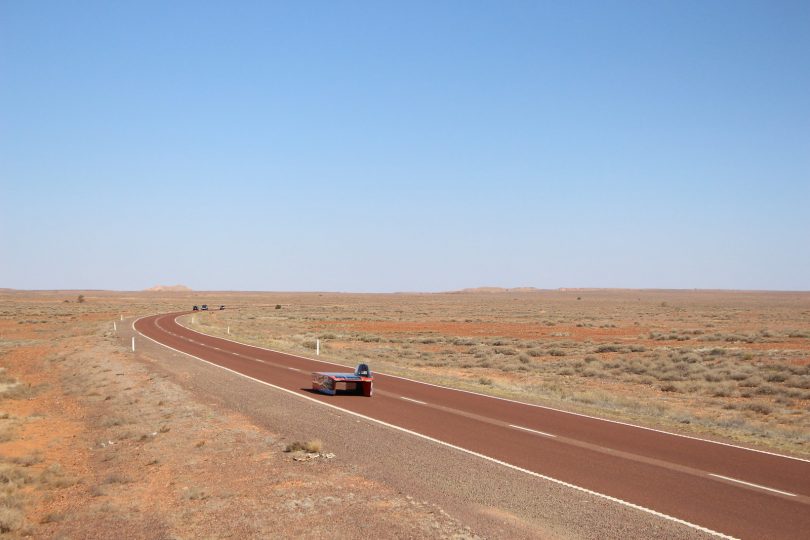
The MTAA Supercharge 2 car racing in the 2019 Bridgestone World Solar Challenge. Photo: ANU.
Isaac Martin, the engineering student overseeing the project, says up to 60 teams from universities across the world take part, including Massachusetts Institute of Technology, Michigan and Cambridge.
“It’s known as the most prestigious of the solar races,” he says.
Every second October, each team’s four drivers take turns over 30 days to pilot 3000 km through the Outback from Darwin to Adelaide, armed only with four square metres of solar panels, 400 battery cells, and a swag for camping by the side of the road at night.
“You start driving at 9 am, and when it gets to 5 pm, you stop by the side of the road and set up camp,” Isaac says.
Even though the cars can reach speeds of 130 km/h, he says the winning team will average about 85 km/h to conserve energy.
“They (drivers) are cocooned in a sort of perspex shell, aerodynamically shaped so it’s as efficient as possible. As per the racing regulations, it also has to be a fairly normal driving position so the driver has good vision.
“There is no air-conditioning because that would take up too much energy, so they usually drive in two-hour stints through the desert because it’s as much as they can take.”
Completing a bachelor’s degree in finance and economics, Alexander Norman oversees the business, media, and event side of the team.
“Building the car and getting it down pat is part of it,” he says. “But the business team has to run events and secure the funding, because two-thirds of the funding for the team comes from industry contacts.”
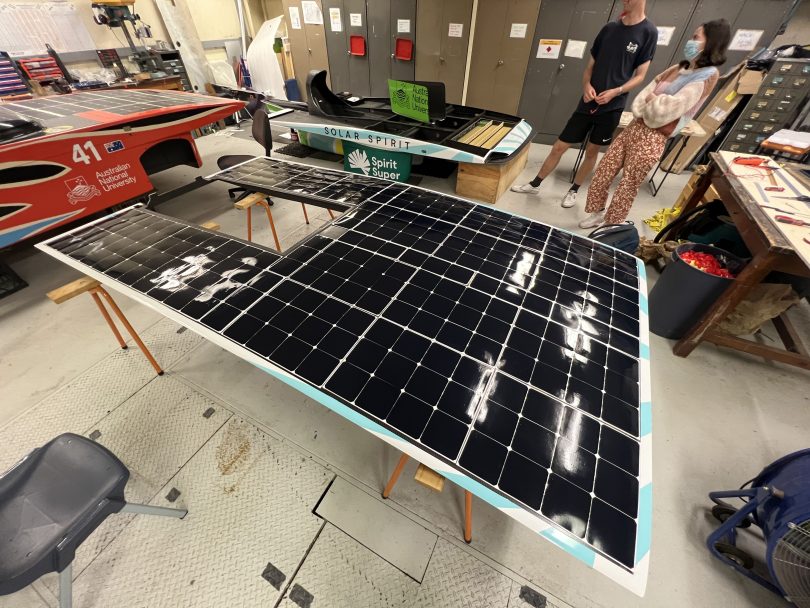
Four square metres of solar panels grace the top of the ANU race car. Photo: ANU.
A winning team typically has millions of dollars behind it.
For the past six years, superannuation company Spirit Super has sponsored the ANU Solar Racing Team. Alexander says its support goes further than covering the cost of the race.
“We also offer a range of outreach programs, bringing the car to different schools to promote STEM (Science, Technology Engineering, and Mathematics) learning and the ANU.”
After last year’s race was cancelled, the team spent time designing an all-new lightweight carbon-fibre chassis. It hoped to debut the car at a Canberra-based event, until the second lockdown hit in September 2021.
“We’re still looking to do a rural tour, ending in Canberra,” Isaac says.
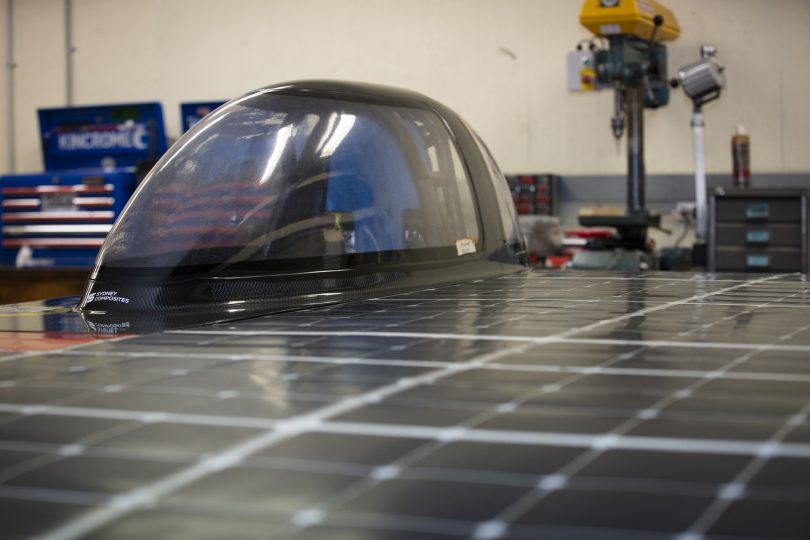
The perspex bubble awaits its drivers. Photo: Thomas Lucraft.
While busily preparing for next year’s race, the team will also showcase the car to 6000 delegates from around the world at the Smart Energy Council Conference and Exhibition in Sydney from 4 to 5 May.
Isaac says solar racing is more than just a drive through the Outback for the fun of it. Not only does it play an extracurricular role for the ANU, it gives students hands-on experience with EV technology.
“There are several companies around the world that began as off-shoots of a solar racing team, including Australia’s success story, Tritium,” he says.
“It’s not necessarily about sticking a solar panel on your car, but more about understanding how EVs work. A lot of the battery designs used in today’s EVs started off in solar cars.”
Alexander describes it as a “breeding ground for students going into the EV field”.
“It’s an opportunity for them to try out a whole range of different practical things related to EVs.”











